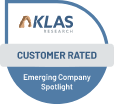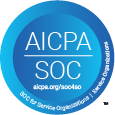By: Edward Abraham, MD
Introduction
Physician credentialing and enrollment with payers are crucial processes for healthcare institutions, ensuring that clinical providers possess the necessary qualifications and competencies to deliver high-quality care that will be reimbursed for patient services. With a medical career encompassing over 40 years as a physician, academic leader, medical author and editor, health system chief executive, senior executive advisor, and consultant, I’ve experienced first-hand the need for seamless credentialing and enrollment for providers across the spectrum of healthcare environments. The credentialing and enrollment process can be particularly complex and resource-intensive for academic medical centers that regularly onboard large groups of physician trainees as well as for health systems acquiring new hospital facilities with associated physician groups. Seamless credentialing and enrollment, facilitated by automated systems, offer a solution to streamline this process, reduce administrative burden, accelerate onboarding, guarantee compliance, and ensure that clinical work performed by providers is reimbursed in a timely manner. Additionally, in the current landscape of healthcare acquisitions, automated credentialing can play a pivotal role in facilitating smoother transitions and integrations, leading to better outcomes as merged workforces come together.
Health System Acquisitions
The healthcare industry is witnessing a significant wave of mergers and acquisitions (M&A), driven by the need for scale, cost-efficiency, and enhanced care delivery. Several factors contribute to this trend:
- Scalable Economics: Larger healthcare systems can negotiate better rates with suppliers, streamline operations, and reduce costs.
- Access to Capital: Hospitals may struggle with financial sustainability due to rising operational costs and reimbursement pressures. M&A often provides access to greater financial resources, enabling investments in advanced technologies and infrastructure.
- Regulatory Pressures: Increasing regulatory requirements necessitate larger compliance teams and sophisticated systems, which larger entities can more easily manage.
- Market Competition: Consolidation helps healthcare organizations remain competitive by expanding their geographic footprint and service offerings.
Approximately 60% of healthcare executives anticipate M&A volume to increase in 2024 (KPMG). Activity has remained strong in the second quarter of 2024, with over 400 healthcare transaction announcements in Q2, compared to 377 in Q1 2024, – eleven of those announcements being hospital transactions (Beckers).While the trend toward consolidation via acquisition brings numerous benefits, it also presents challenges such as maintaining data integrity and ensuring seamless operations. Integrating newly acquired entities quickly and efficiently in this dynamic environment is paramount.
Once the transaction closes, providers often need to reenroll with payers to ensure continuity of reimbursement and compliance. Automated credentialing systems can significantly aid this process, ensuring that healthcare providers are promptly verified and can practice post-transaction without delays. Automated credentialing systems offer several advantages to the acquisition process:
- Speedy Integration: Acquired entities can be quickly integrated into the parent organization’s credentialing system, reducing downtime and maintaining continuity of care.
- Unified Standards: Automated systems ensure that all providers across the newly formed organization meet consistent credentialing standards, enhancing overall care quality.
- Resource Optimization: By automating credentialing, organizations can reallocate administrative resources to other critical integration tasks, improving overall efficiency.
- Risk Mitigation: Automated credentialing reduces the risk of credentialing errors and non-compliance, safeguarding the organization against potential legal and financial repercussions.
Academic Medical Centers
Academic Medical Centers face unique challenges in credentialing not only because of their multidisciplinary faculty practice plans, but also due to the large influx of resident and fellow physicians each academic year. Key challenges include:
- Volume: The high volume of residents and fellows entering the system simultaneously creates bottlenecks in the credentialing process.
- Complexity: Each trainee’s credentials must be verified across multiple criteria, including education, training, licensure, and certifications.
- Timeliness: Delays in credentialing and enrollment can prevent residents and fellows from starting their training on time, impacting patient care, educational outcomes, and reimbursement.
- Compliance: Ensuring compliance with accreditation bodies and regulatory requirements is critical and resource intensive.
Benefits of Automation
Automated credentialing systems leverage advanced technologies to streamline and enhance the credentialing process. Key benefits include:
- Efficiency: Automated systems can process large volumes of data quickly, reducing the time required for credentialing from weeks to days.
- Accuracy: AI-driven algorithms can identify discrepancies and verify credentials more accurately, minimizing errors and omissions.
- Consistency: Standardized processes ensure consistent application of credentialing criteria, enhancing compliance and reducing variability.
- Integration: Automated systems can seamlessly integrate with existing health IT systems, facilitating the flow of information and reducing manual data entry.
- Scalability: These systems can quickly scale to accommodate fluctuations in credentialing requests, ensuring no bottlenecks occur.
By focusing on these elements, academic health systems can better navigate the complexities of credentialing and enrollment, ensuring that their providers and trainees are equipped to deliver high-quality care from day one. Automation has been proven to improve efficiency, accuracy, and expenses, and improves the trainee experience by ensuring seamless onboarding.
Case Study: Automated Credentialing in Action
Background
As a large health system with facilities located in the Northeast, and a subsidiary to one of the largest integrated health care delivery and financing institutions in the US, this network includes academic hospitals and a diverse portfolio of clinical care delivery sites including primary and specialty care offices. After using a credentialing and enrollment platform that was incapable of keeping up with the scale of the organization, leadership decided to undertake a full-scale search for a new credentialing and enrollment partner.
Implementation
This health system had been using one of Acorn’s competitors and was experiencing major issues with credentialing and enrolling providers. Fragmented systems that did not communicate with each other, compounded with insufficient tools for multi-facility privileging, was requiring practitioners having to complete duplicate documentation on a regular basis. These issues, along with the arduous workflow for gathering provider documentation, resulted in an enrollment process that was slow and cumbersome. On the medical staff side, the health system was struggling with software that was difficult to use. Reporting was primarily handled outside of their legacy software platform, with poor interfaces and function between the modular components. Communication from the vendor was limited, meaning that issue resolutions and “upgrades” took longer than optimal.
The Mobile Capture feature native to Acorn that allows for easier documentation gathering, the ability to scale privileging forms to a multi-facility organization, and the powerful dashboard and reporting features were just some of the features that offered clear value to the health system’s evaluation committee.
The initial phase of implementation of the Acorn system included a collaborative approach encompassing current state assessment, gap analysis, business case, and the development and execution of the project plan. This led to Acorn making 41 recommendations across 9 key initiatives, identifying 43 next steps for the client SWAT team, and conducting over 40 cross departmental interviews. Once the current technical architecture was assessed, Acorn deployed the project plan and began to execute the technical implementation.
Outcomes
- Reduced Processing Time: Once Acorn was implemented, credentialing time was reduced by over 60%, leading to faster provider enrollment and more rapid generation of revenue.
- Reduced Expenses: Acorn reduced administrative expenses by 40%.
- Enhanced Compliance: The Acorn system ensured adherence to accreditation standards, reducing the risk of non-compliance penalties and significantly reducing credentialing errors.
Conclusion
Seamless credentialing is essential for academic health systems with residency and fellowship training programs as well as health systems navigating the complexities of managing acquisitions. As a veteran healthcare executive, I’ve witnessed how a niche market such as credentialing and enrollment solutions significantly impacts the overall revenue cycle of health systems. Automated credentialing and enrollment systems offer a robust solution to streamline processes, enhance accuracy, and ensure compliance. By embracing technologies such as Acorn Credentialing, healthcare institutions can improve operational efficiency, reduce administrative burdens, and deliver better patient care. The future of credentialing lies in automation for forward-thinking healthcare organizations.





